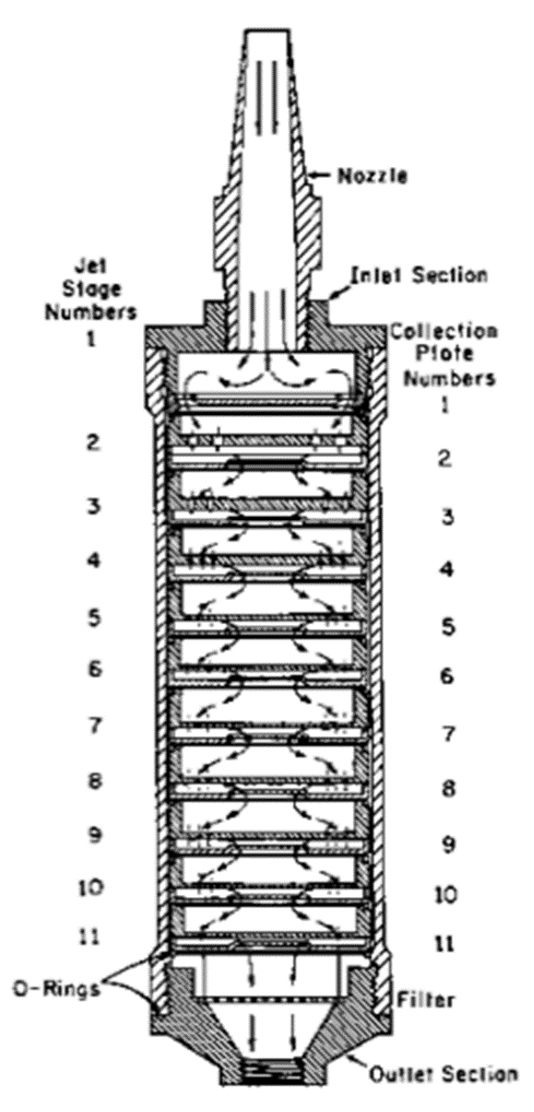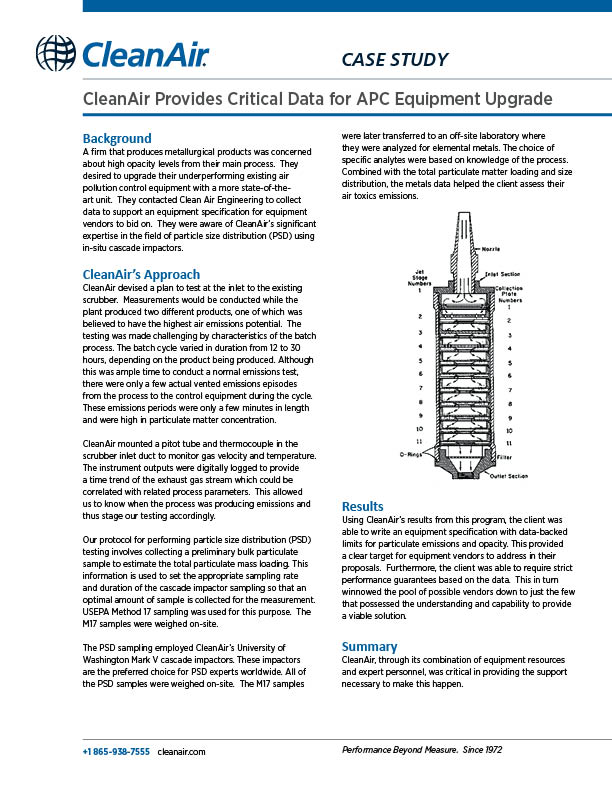CleanAir Provides Critical Data for APC Equipment Upgrade
CleanAir Provides Critical Data for APC Equipment Upgrade
Background
A firm that produces metallurgical products was concerned about high opacity levels from their main process. They desired to upgrade their underperforming existing air pollution control equipment with a more state-of-the-art unit. They contacted Clean Air Engineering to collect data to support an equipment specification for equipment vendors to bid on. They were aware of CleanAir’s significant expertise in the field of particle size distribution (PSD) using in-situ cascade impactors.
CleanAir’s Approach
CleanAir devised a plan to test at the inlet to the existing scrubber. Measurements would be conducted while the plant produced two different products, one of which was believed to have the highest air emissions potential. The testing was made challenging by characteristics of the batch process. The batch cycle varied in duration from 12 to 30 hours, depending on the product being produced. Although this was ample time to conduct a normal emissions test, there were only a few actual vented emissions episodes from the process to the control equipment during the cycle. These emissions periods were only a few minutes in length and were high in particulate matter concentration.
CleanAir mounted a pitot tube and thermocouple in the scrubber inlet duct to monitor gas velocity and temperature. The instrument outputs were digitally logged to provide a time trend of the exhaust gas stream which could be correlated with related process parameters. This allowed us to know when the process was producing emissions and thus stage our testing accordingly.
Our protocol for performing particle size distribution (PSD) testing involves collecting a preliminary bulk particulate sample to estimate the total particulate mass loading. This information is used to set the appropriate sampling rate and duration of the cascade impactor sampling so that an optimal amount of sample is collected for the measurement. USEPA Method 17 sampling was used for this purpose. The M17 samples were weighed on-site.
The PSD sampling employed CleanAir’s University of Washington Mark V cascade impactors. These impactors are the preferred choice for PSD experts worldwide. All of the PSD samples were weighed on-site. The M17 samples were later transferred to an off-site laboratory where they were analyzed for elemental metals. The choice of specific analytes were based on knowledge of the process. Combined with the total particulate matter loading and size distribution, the metals data helped the client assess their air toxics emissions.

Results
Using CleanAir’s results from this program, the client was able to write an equipment specification with data-backed limits for particulate emissions and opacity. This provided a clear target for equipment vendors to address in their proposals. Furthermore, the client was able to require strict performance guarantees based on the data. This in turn winnowed the pool of possible vendors down to just the few that possessed the understanding and capability to provide a viable solution.
Summary
CleanAir, through its combination of equipment resources and expert personnel, was critical in providing the support necessary to make this happen.




